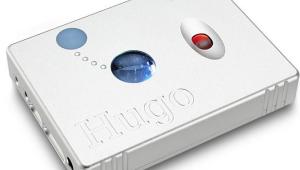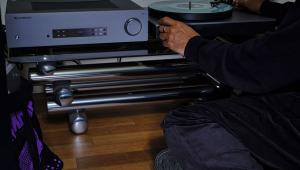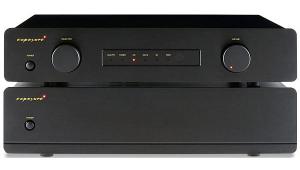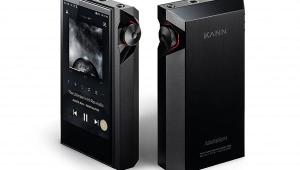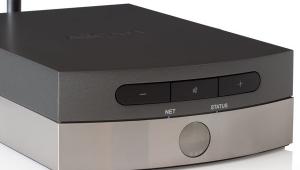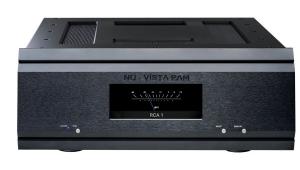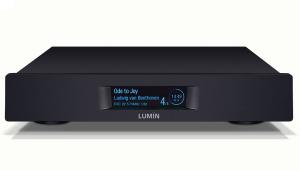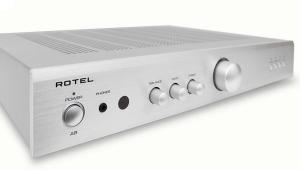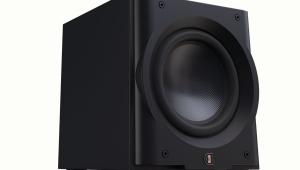PS Audio Stellar Power Plant 3
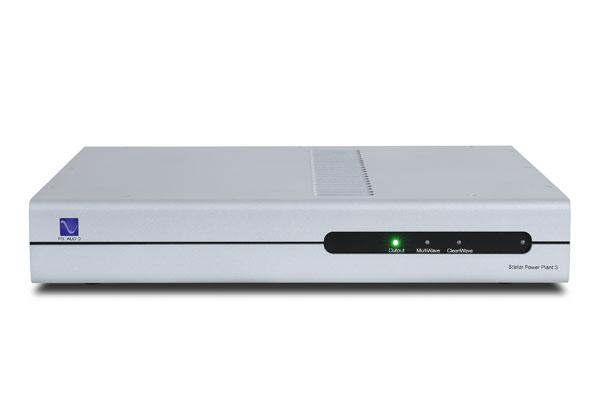
 When it comes the numerous enquiries that fill out the HFC letterbag every month, aside from those asking which speaker goes best with which amplifier or if hi-res music streaming really is all it’s cut out to be, there’s a surprisingly vocal minority that bangs the ‘mains conditioners/regenerators are nonsense’ drum far harder than Ginger Baker, John Bonham or Dave Grohl ever did in their pomp.
When it comes the numerous enquiries that fill out the HFC letterbag every month, aside from those asking which speaker goes best with which amplifier or if hi-res music streaming really is all it’s cut out to be, there’s a surprisingly vocal minority that bangs the ‘mains conditioners/regenerators are nonsense’ drum far harder than Ginger Baker, John Bonham or Dave Grohl ever did in their pomp.
Take a look on any hi-fi forum and fierce arguments rage as to the validity of Bob Stuart of Meridian’s observation in the late seventies that one of the main inputs that’s criminally under appreciated in the amplifier relates to the mains electricity that enters into it. Mains filters and conditioners of various shapes and sizes then followed in an effort to ‘clean up’ the electrical signal from offending interference, and then in 1998 PS Audio unveiled its first mains regenerator. The theory, so it went, was that if you wanted the cleanest mains supply possible for your system, you’d need to synthesise it from scratch.
Of course, it’s all too easy to thumb your nose at this principal, but to do so is to miss out on one of the simplest system upgrades going. As PS Audio’s chief analogue engineer, Darren Myers, puts it: “I’m not aware of anything that is universally agreed upon in the audio community. While they’re free to hold their own opinions without actually hearing one, the fact that there are thousands of passionate and enthusiastic Power Plant owners around the world heavily contradicts these claims.”
For the uninitiated, a mains regenerator is essentially a high-voltage power amplifier with an integral sine wave oscillator at its input. As with all power amplifiers, regenerators have a rated output that’s beyond which they tend to run out of puff – in this specific instance, current as the output voltage is fixed. This means that if you want to run a hefty power amp from it, you’ll need an equally meaty regenerator too.
Priced at £2,310, the Stellar Power Plant 3 is PS Audio’s entry point to a regenerator range that extends all the way up to the £10,500 DirectStream P20 Power Plant. Unlike the aforementioned flagship offering, it’s surprisingly diminutive and you’d be forgiven for mistaking it for a rather minimalist-looking preamp. With nothing in the way of external heatsinks to underline its intentions, it stands a mere 83mm high and instead has a sleek strip of perforations along the top venting a front-to-back heatsink that’s neatly tucked away inside.
Though it offers the potential to work its magic with power or integrated amplifiers, the PS Audio is limited to high-efficiency Class D or BASH designs. Anything else requires more investment in a regenerator further up the company’s range.
Step around the back to the business end and you’ll discover an input for the mains power and four three-pin UK mains socket outputs (a selection of different output voltages and sockets are of course available for different territories). The sockets are split into two groups of two, with the central brace offering a choice of ‘Filter High Current or Regenerated’, while a switch enables you to select between the two. The remaining power outlets are simply labelled ‘Regenerated’ and, obviously, are not switchable. PS Audio advises that it would not be wise to utilise an additional mains distribution lead to increase the number of outlets if you require them as doing so ups the effective output impedance and can result in overloading the regenerator.
The Filtered High Current outputs are best suited to components that draw more than the Power Plant 3’s 300W maximum rated output – such as power amplifiers – and additionally benefits from the inline filtering. While the series impedance isn’t specified, when added to the wall socket it is sure to be greater than the less than 8-miliohm output impedance recommended for the regenerated output.
The Power Plant 3 offers up to three separate zones, delivering 300W of pure continuous regenerated power, 500W of short term-power (for up to 30 seconds) and a mighty 900W dynamic peak power (for three seconds or less) for when explosive performances require it.
As the standby button on the front fascia is the only control, the plastic remote takes on the brunt of the responsibility when it comes to operation. There are, however, three coloured LEDs to highlight the system status. The ‘Output’ one on the left indicates the power being drawn from the regenerated mains outlets (glowing either green, orange or red). The former means that it is within 90 percent of maximum output (that’s 270W or lower), orange is for the point between 270-300W where it is within maximum and red tells you that you have exceeded the 300W mark. Should you go above 330W for 30 seconds or more, the Power Plant 3’s fault mode automatically kicks in. On such an occasion, all outputs become disabled and the LEDs double up to indicate where the problem lies. While some issues can be easily corrected yourself, more serious ones – such as those with the internal amplifier – will require service support from a professional.
The ‘MultiWave’ button highlights when the mode has been employed. You can read in more depth about what the implications of this are opposite, but in simple terms, MultiWave adds distortion to the regenerated output waveform. The ‘CleanWave’ mode that’s indicated by the final LED is a degaussing function designed to eliminate any permanent magnetisation of the transformer cores in your attached component (which will need to be powered up for the mode to work).
We opt to employ the Power Plant 3 in the way that we suspect most users will: powering source components and a headphone amplifier. Our setup consists of a Mac Mini utilising Windows XP and JRiver Media Center v22 and TC Electronic Impact Twin FireWire audio interface feeding S/PDIF to a Chord Electronics Qutest DAC (HFC 436), which is in turn connected to TEAC HA-501 and Matrix M-Stage HPA-3B headphone amplifiers. Sony’s full, open-air MDR-MA900 headphone is employed throughout the test procedure.
The TC Electronic, Chord, TEAC and Matrix (<14W, 3W, 22W and <25W consumption respectively) are plugged into the Power Plant 3 and run in Regenerated mode. We also have the older mark-one version of PS Audio’s larger P10 (£4,400) from 2013 to see how the two compare.
Sound quality
Taken from her album The Girl In The Other Room, Diana Krall’s Narrow Daylight is not the clearest of recordings. Without the Power Plant 3 employed, the piano comes across as slightly cloudy while the wistful vocal sounds closed in and dialled back. However, when the regenerator works its magic, the story changes completely. Suddenly the soundstage opens up, the piano snaps into focus and Krall’s emotive lyrics become open and distinct within a vastly enlarged soundstage. Meanwhile the dynamic ease and variety experience an enormous boost as the emotional clout is returned to the performance.
Following suit Pink Martini’s high-spirited Où Est Ma Tête? from the 2009 album Splendor In The Grass similarly suffers when deprived of PS Audio’s restorative powers. Once again the soundstage contracts as dynamics are squashed and the sense of joie de vivre is all but strangled out of the performance.
Regardless of the musical genre, the improvement is clear for all to hear. Take for example the 24-bit/88.2kHz conversion from the Harmonia Mundi SACD of George Gershwin’s Piano Concerto In F. Heard without the regenerator in place you’d be forgiven for thinking it possible that the Rochester Orchestra’s performance could sound any more expansive in the first section of the opening movement. But as with Jon Nakamatsu’s sonorous piano, once the Power Plant 3 is employed the stereo image becomes obviously more layered – adding an additional dimension of depth up to now not experienced – while the surrounding instruments become more solid, stable and engaging. It’s almost like listening to a completely different recording. Almost...
Switching over to PS Audio’s older P20 and then pairing it up with first the TEAC HA-510 and then Chord’s Qutest DAC, it’s immediately obvious that the regenerative powers are more clearly felt on the latter than the former – although it’s worth mentioning that the performance is still an improvement over what it sounds like without, with the older P20 employed the benefits are notably less obvious. Will the same be true with the Power Plant 3? This is a job for Nat King Cole.
An enticing introduction to the pleasures of easy listening jazz, Audio Fidelity’s SACD version of Welcome To The Club with the Count Basie Orchestra has all the ingredients to separate the men from the boys. And that’s precisely what happens with the TEAC HA-510 in circuit. Close your eyes and you’re whisked back in time to a smokey, dimly lit fifties speakeasy. As Dave Cavanaugh kicks a Basie-less orchestra into the opening refrain of Anytime, Anyday, Anywhere, the soundstage opens up, becomes more airy and expands dynamically as much as it does spatially. It’s this very real feeling of being present in a performance that marks the Power Plant 3 out as being quite so special.
Conclusion
The impressive magic trick that power regenerators perform to a piece of music’s soundstage, dynamics and clarity unfortunately doesn’t come cheap. Which is perhaps what marks the Stellar Power Plant 3 out as being so deserving of your attention. Sure, £2,300 is certainly no small amount of money, but in the world of power regenerators it’s perhaps the sale of the century. If you’re happy with your system and are looking for one last tweak to wring out even more performance improvement, PS Audio might just have the answer. Ignore this upgrade option at your peril. HFC
DETAILS
Product: PS Audio Stellar Power Plant 3
Type: Mains regenerator
FEATURES
● 300W continuous, 500W short-term and 900W dynamic peak power
 |
Inside this month's issue:
Ruark R610 music system and Sabre-R standmount speakers, PMC twenty.23i Active, floorstanders, English Acoustics Downton preamplifier, Bluesound NODE ICON preamp/streamer, Ortofon Concorde Music Blue MM cartridge and much, much more
|

